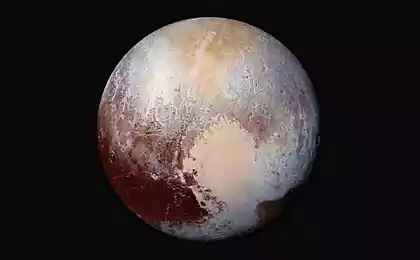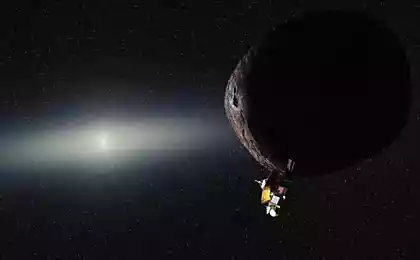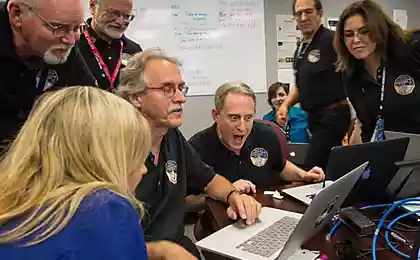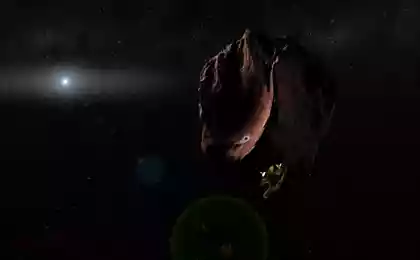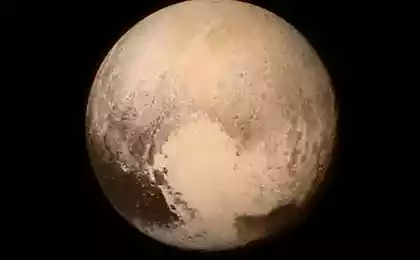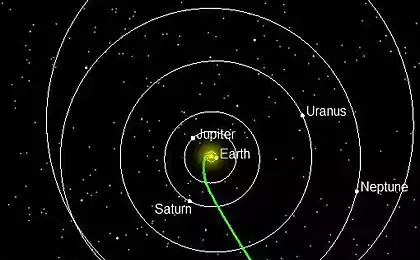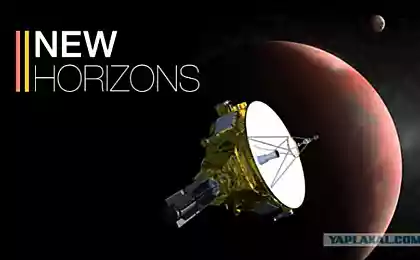1237
Pluto flew with the "new horizon"
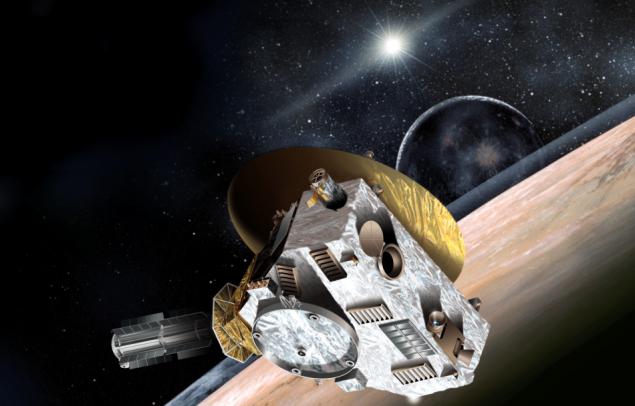
This week we are waiting for a historical event - the first time the Earth will fly past Pluto unit. The probe "New Horizons" in the afternoon on July 14 will be at a distance of 12 500 km of the dwarf planet. But due to the fact that the rate of data transmission over such distances is approximately 1 kbit per second, the data will be transmitted from the probe months. Look at the Pluto flyby online broadcasting does not work, but it does not matter. Thanks to the community of enthusiasts we can fly past Pluto virtually in space simulator Orbiter, and almost to see how this event will take place.
A little materiel h4> 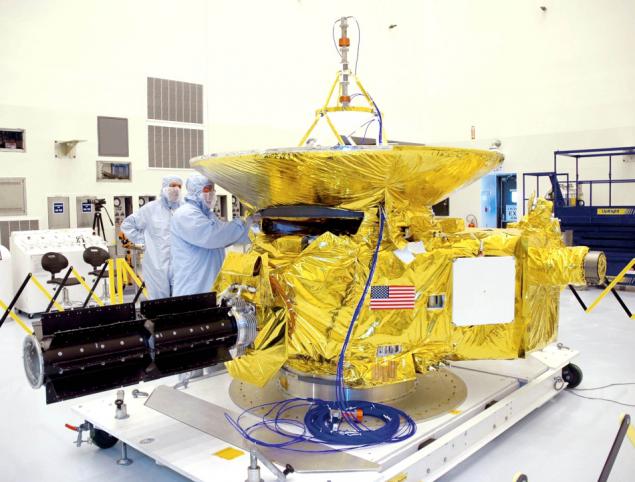
«New Horizons" in the assembly and test facility i>
The probe "New Horizons" is the initial weight of 478 kg, including 77 kg takes fuel (hydrazine) and 30 kg - the scientific equipment. As a source of electricity used RTG with 11 kg of plutonium-238. At the time of arrival at Pluto RTG produces about 200 watts of power. The device wrapped in multilayer thermal barrier coating (Dacron, Mylar, Kapton), which also serves to protect against micrometeorites and heated heat generated by the electronics. To reset the excess heat in the inner regions of the solar system provides shutters, and if the heat from the electronics is not enough, the automatic heater is turned on. The probe has two low gain antenna (for communication on short-range) antenna and a single amplification medium and high. Propulsion system 16 includes motor combined into two groups of 8 for greater reliability. In each group two engine thrust 0, 5 kg are used for correcting the trajectory, and traction motor 6 to 80 grams orientation. On-board computer has a radiation-resistant processor with a frequency of 12 MHz and SSD 8GB. The computer and the drive are also duplicated. To position detection apparatus used in space two star sensor, two solar sensor (reserve) and two inertial measurement unit with gyroscopes and accelerometers. Exposure apparatus in the space produced by an engine in flight mode to target probe is also stabilized rotation.
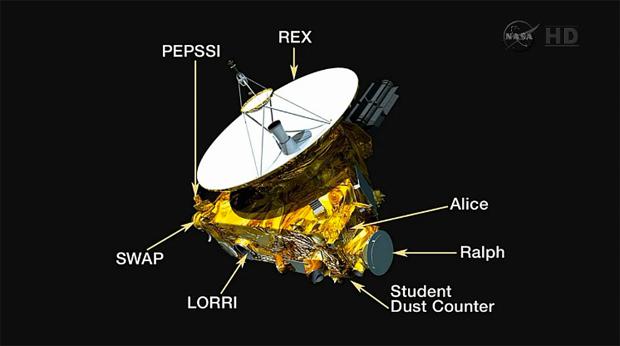
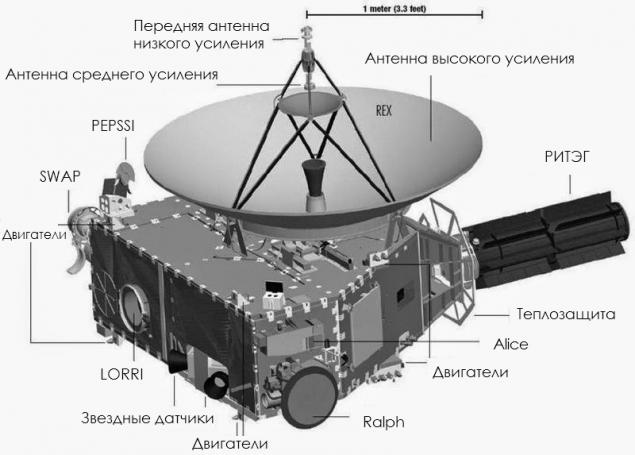
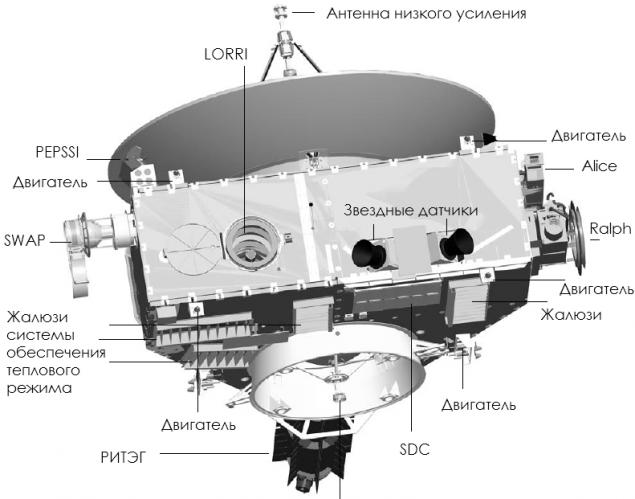
On board the "New Horizons" has seven scientific instruments:
Alice Ralph LORRI SWAP PEPSSI SDC REX
Launch h4> 
Preparing to start and run not without trouble. In the fall of 2005 at Cape Canaveral came Hurricane Wilma, which damaged the first accelerator stage debris gate assembly and test facility. Accelerator had to change. The first stage fuel tank had to be evaluated, because a similar tank collapsed on tests. All of these things moved starting from 11 January 17. Every day ballistic situation worsened, the Earth left the area pericenter its orbit, and then to overcome the pull of the Earth and the Sun had to spend more and more fuel. Less fuel remained in the crackdown, which lengthen the way to Pluto. A start since February 2 made it impossible gravity assist from Jupiter, which would delay the mission even harder.
January 17 launch did not take place - to prevent the wind. January 18 abruptly de-energized the control center probe. January 19 launch was delayed by 52 minutes due to low clouds, but finally in 19:00 UTC «New Horizons" off the ground:
After about 100 seconds separated the first stage boosters side, there were as many as five - was used to launch the heaviest version of the carrier rocket "Atlas V». After four and a half minutes disconnected Russian engines RD-180, standing in the first stage, and after ten minutes of the second stage came on the reference orbit. After a twenty-minute pause, the engine of the second stage switches on again, and the "New Horizons" reached a speed of 12, 4 km / s. Then came the turn of the solid booster Star-48. Bunch probe and booster hyped up to 60 revolutions per minute, and after about 80 seconds of engine operation "New Horizons" accelerate to 16 km / s relative to the Earth, becoming the first spacecraft, develop a third space speed immediately to the Earth's orbit ("Pioneer" and " Voyagers "reached her only after gravity assist from Jupiter).
Animation separation from the upper stage and further flight i>
Span Jupiter h4> After just a year, in February 2007, "New Horizons" flew past Jupiter at a distance of 2 to 3 million. Km (about 32 diameter) to obtain "free" 4 km / s due to gravity assist and shorten the path to Pluto for three years. Scientific instruments not only test flight in a real scenario of a celestial body, but also to collect interesting data. After the end of the mission "Galileo" in 2003, the neighborhood no one visited Jupiter and devices "New Horizons" were much better.
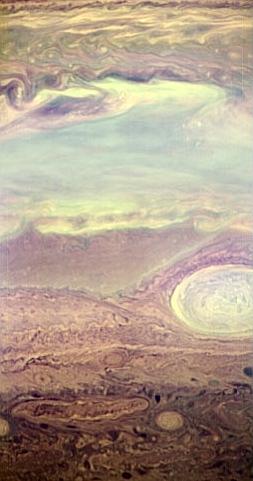
The Great Red Spot eyed Ralph i>
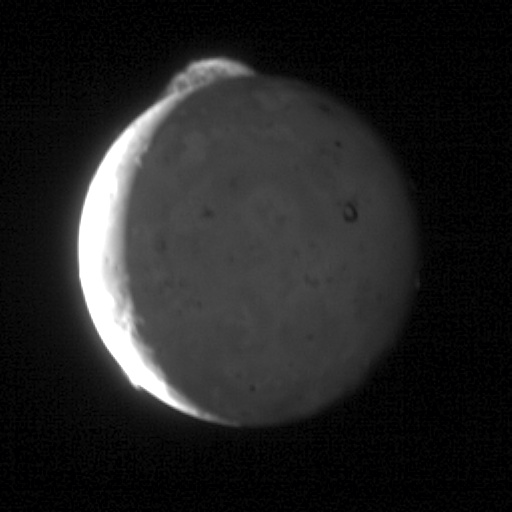
Animation volcano on Io i>
Pluto h4> When Jupiter "New Horizons" for years flew in sleep mode. Crossed the orbit of Saturn probe in June 2008, Uranus - in March 2011. Despite the fact that some instruments started working before the probe is completely "awake" December 6, 2014. And since January, we get closer photos of Pluto and its moons:
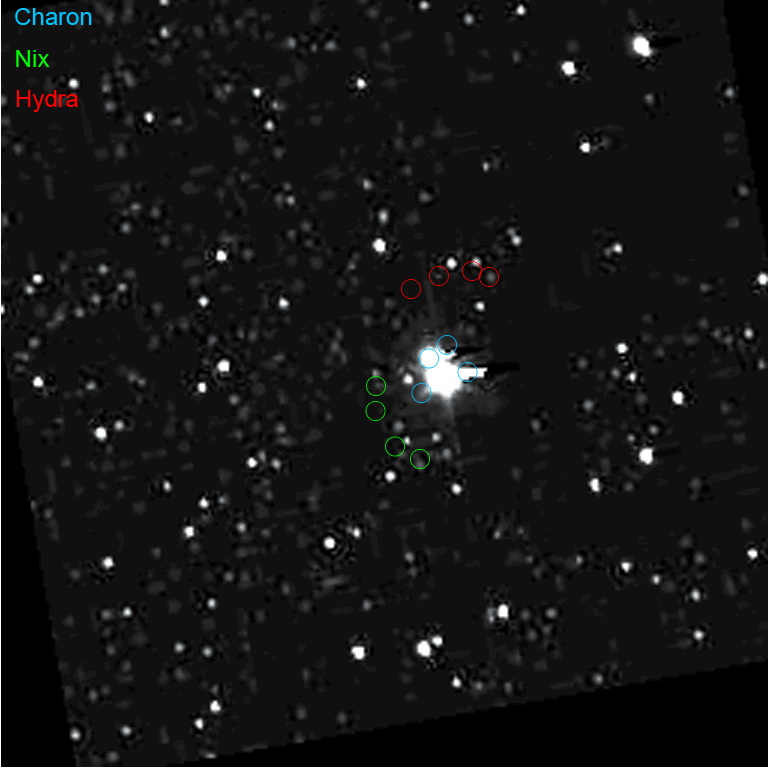
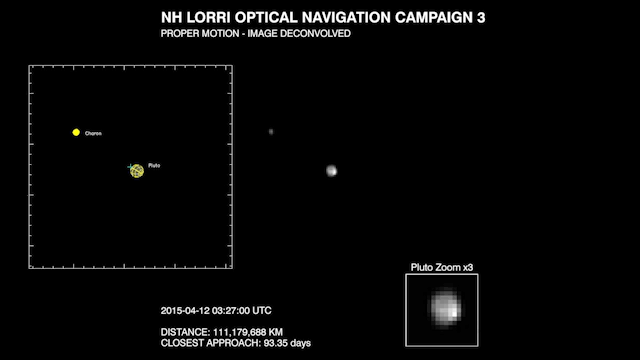
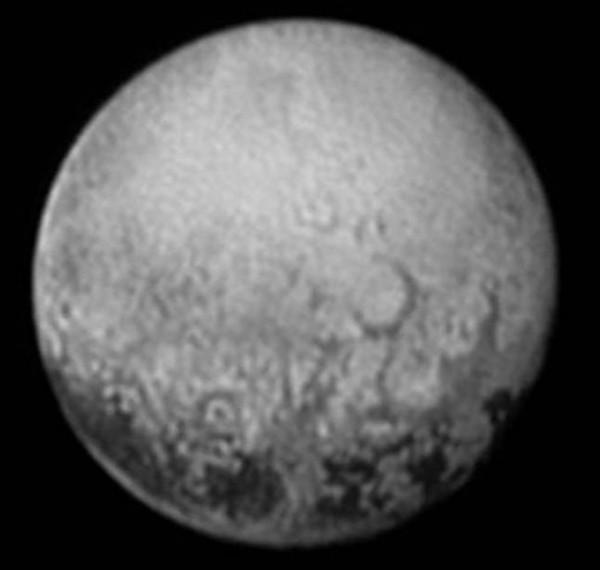
Pluto. The latest snapshot of July 11, i>
Function sequence span is already known, it can be viewed by downloading the app from NASA's Eyes official site or seeing record on YouTube ( better to expand to fill the screen):
And we'll look at this in a span of Orbiter. For this we need:
himself Orbiter . Addon «Pluto and Moons » Addon «New Horizons » Addon « New Horizons Pluto Encounter »
Extract to a folder simulator «Pluto and Moons». In the folder \ Config Simulator add to the file Sol.cfg string < br />
& lt; code class = & quot; markdown & quot; & gt; Planet ## = Pluto Pluto: Moon1 = Charon Pluto: Moon2 = Nix Pluto: Moon3 = Hydra & lt; / code & gt; pre> replacing the grille to the number of the planet. In my case, the last number was 8, change ## to 9:Extract to a folder simulator «New Horizons». Extract to a folder simulator «New Horizons Pluto Encounter», overwriting the existing files. Launch Orbiter. The required script is called - New Horizons - Pluto Encounter

Hi, Pluto!

Control Keys:
F1 - Sets the view from the first / third person. T - speed up time to 10 times, R < / - slow down. Control Keys orientation:

And it is very useful Num 5 stops the rotation in all axes. Z - reduce the field of view (zoom in), X - to increase the field of view (zoom out) F9 - mode planetarium, with signed names of objects and constellations. H - Mode indicator on the windshield. Toggle the Orbit / Surface / Docking.
Pluto in sight:
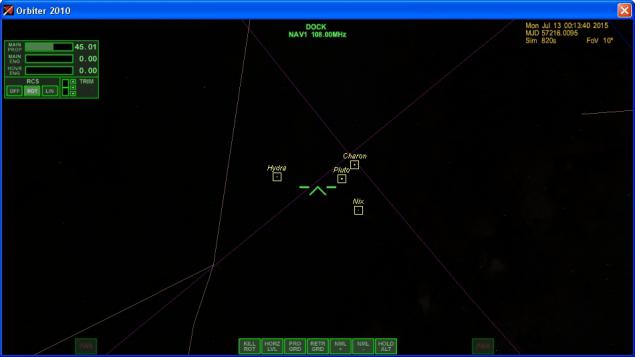
July 14:
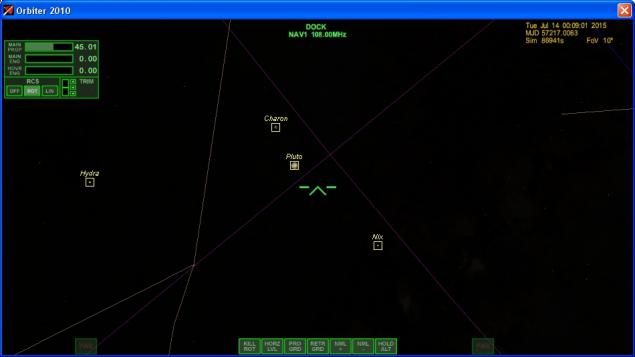
11:11 UTC, Pluto and Charon close-up, to the point of closest approach is less than an hour.
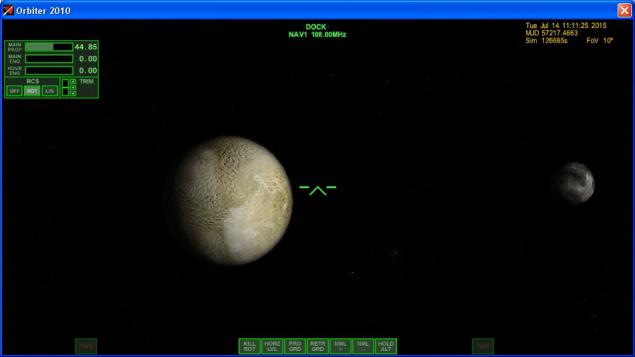
11:32 UTC. Take for whether the "New Horizons" is a photo?
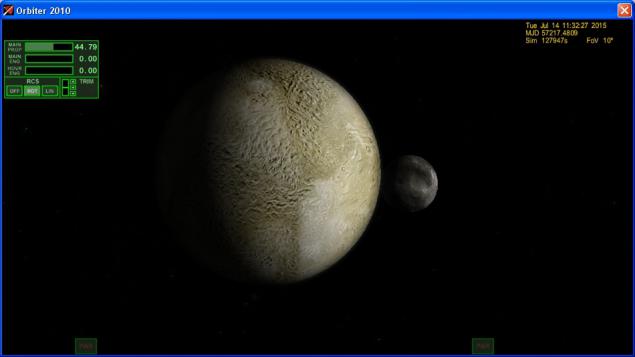
11:50 UTC (14:50 Moscow time). The point of closest approach is already outside of the orbit of Pluto, hence it will be visible as a crescent.
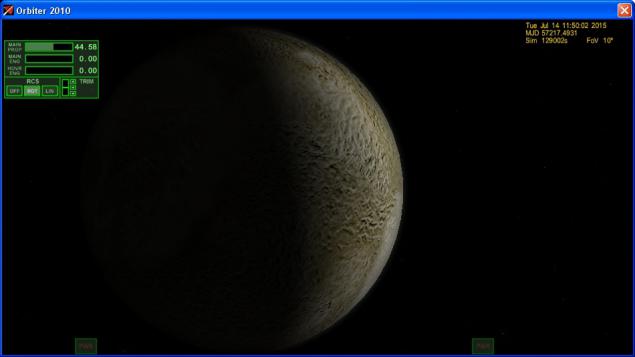
12:50 UTC (15:50 Moscow time). Enter the shadow of Pluto. Alice spectrometer will collect data here is very interesting.
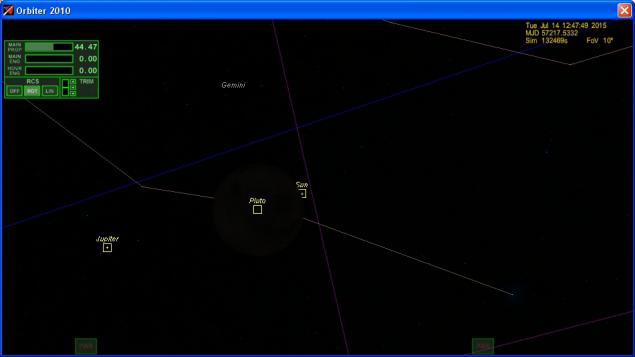
14:15 UTC (17:15 Moscow time). Enter the shadow of Charon.
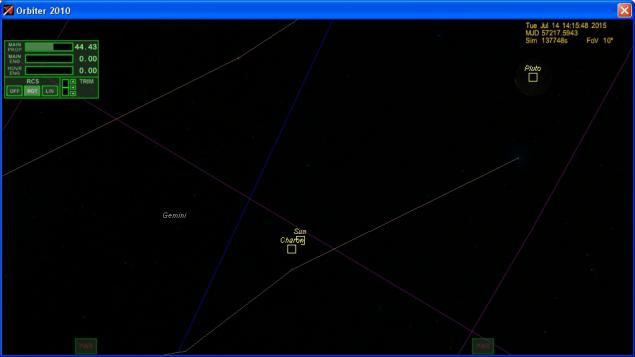
~ 20 hours UTC on July 14. From the neighborhoods of this point, "New Horizons" should send a signal to "call home", meaning that all went well. On Earth, it will take about 4 o'clock in the morning in Moscow.
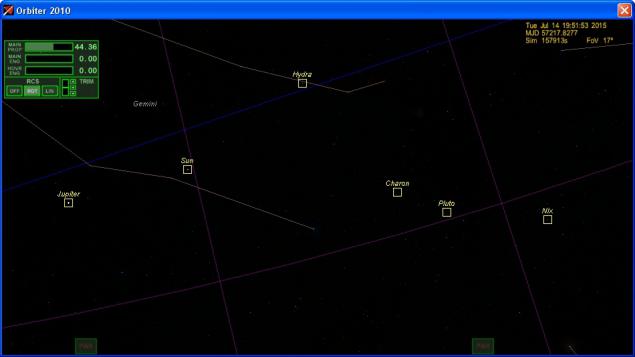
Small FAQ h4> Will an online broadcast from the probe? B>
There will not. July 14 the probe will fly most of the time in radio silence mode. This is due to the fact that the antenna and scientific instruments is rigidly affixed to the body, and can either collect data or transmit them to the ground. Moreover, the data rate is low, in the region of 1 Kbps. In this mode, one photograph will be transmitted LORRI about an hour. I'm not talking about that antenna Deep Space Network, which work with interplanetary stations are not given entirely to the needs of the "New Horizons" in the solar system have enough stations with which to work, and CMP "New Horizons" happy if it receives 8:00 antenna of time per day.
And what then navigate to wait any event? B>
The most important event, which will be known to the public - a "call home" in the region of 4 am Moscow time. It would mean that the "New Horizons" with nothing faced, did not go into safe mode, and does not happen any other incidents.
When will the new unique photos? B>
Photos of Pluto from the area of closest approach expect to receive on July 15 photo Charon is expected on the 16th day. The first color photos are expected in the region on 18 July. A transfer of all the data collected will take months to complete its plan already in 2016.
Why such a slow connection? B>
The speed of communication is determined by the ability to distinguish signal from noise. Speaking very simple terms, the less power the transmitter antenna smaller and greater distance, the slower is necessary to transmit data so that they can be distinguished on the receiving side. The antenna size of the Arecibo telescope, powered by nuclear power plants would be able to transmit data to gigabit unless terabits per second. "New Horizons" with an antenna diameter of 2 meters and on-board power source 200 Watt have to settle for much less.
Also see. теоремы Shannon channel with noises .
What's the "New Horizons" will be then? B>
After the passage of Pluto will be made for search in the поясе Kuiper . Specificity path means that a suitable target must be within a very narrow cone, such as Eris as the target is not exactly suitable.
And you can go to Pluto? B>
"New Horizons" Pluto have a velocity relative to ~ 13 km / s. Total stock of fuel on the probe will be enough to change the speed by about 500 m / s. And if we designed the ship, arbitrarily changing the ratio of components, the braking chemical engines station weight 478 kg delivered to the orbit of Pluto about 6 kilograms, including the engine, which would be braked, and the tanks wherever fuel is stored.
At the same time, theoretically Mission with access to the orbit of Pluto is possible. But it will require:
decade gravitational maneuvers or just a slow motion (to extinguish smaller relative speed of Pluto) Use nuclear engines or ligament nuclear reactor and ion engines. Use a heavy launcher media output much larger initial mass into orbit. Against this background, the idea of a high speed to disperse the relatively small unit, to fly to Pluto in just ten years, and to collect information from the flight trajectory looks quick, cheap and effective . Where's Pluto? B>
If after midnight to look at the sky and hold mentally line through Deneb and Altair, the Pluto is low in the sky in the constellation Sagittarius. Its magnitude is 14, and in amateur telescopes to see Pluto will not work.
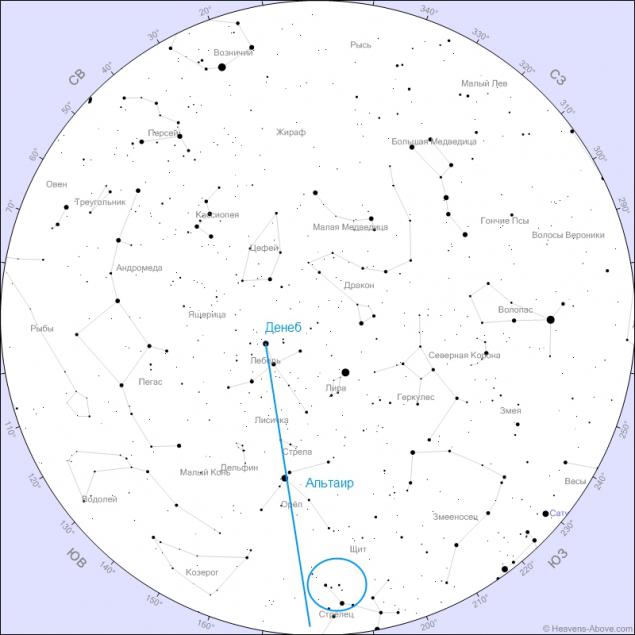
On the tag Orbiter other publications about virtual space travel.
The publication used magazine "News of Cosmonautics» . Now, the magazine can be purchased not only in paper but also in digital form, in the application «VipishiSmart: digital media", available for iOS and Android.
Source: geektimes.ru/post/253316/












